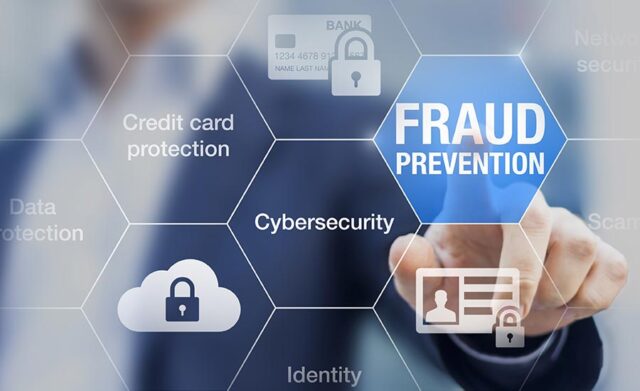
Detecting e-commerce fraud by companies themselves is a difficult, uncertain, and costly task. To meet the needs of online shops, a number of professional, dedicated solutions are being developed, dedicated to exactly this purpose, with competitive payment security standards.
What Is E-Commerce Fraud?
E-commerce fraud occurs in the form of chargebacks. When a customer presents a valid reason to his or her bank why he or she should not have been charged for a particular transaction, the bank may issue a chargeback. Such a chargeback takes the purchase funds from the merchant and returns them to the customer.
The types of e-commerce fraud are many and hackers are constantly coming up with new forms, but we would like to outline two of the most popular:
- Friendly fraud – occurs when a merchant receives a chargeback because the cardholder denies making a purchase or receiving an order, but the goods were actually delivered. For example, where a customer may have forgotten that they placed such an order, a family member who had access to the card information created the order or is deliberately trying to get the goods for free;
- Clean fraud – is a transaction that appears legitimate in all respects, but is in fact fraudulent. This type of fraud involves a third party illegally obtaining and using someone’s account information to make purchases. Often the victim does not realize they have been victimized until they make a claim for a refund. This is the most difficult type of fraud to combat as the order contains important customer information, IP address, and accurate AVS and CVV details.
What Types of Fraud Threaten Your Website?

Vendors are the source of the information desired by fraudsters. Many times, companies face problems such as data loss or a website being broken or even deleted. What steps are fraudsters capable of?
- Cyber attacks – many large companies have been their targets and victims in recent years. After all, social networks and large companies are a treasure trove of sensitive customer data such as logins, passwords, credit card numbers, passport information, and more;
- Third-party integrations – most e-commerce merchants use up to 10 third-party integrations to help with billing, ordering, shop optimization, email, chat, and so on. All of these applications require some form of access to the shop which can put sensitive data at risk. The more third-party integration an online shop has, the greater the risk that a third-party application will make huge often irreversible changes to the site;
- Accidental or deliberate intervention by individuals – inattention of employees or others with access to the website can result in important data being deleted permanently;
Company Budget to Combat Fraud
On average, merchants spend 3-5% of their revenue on fighting fraud. However, up to 1% of orders are still missed, and these often result in chargebacks. When it comes to fraud, doing nothing can be just as costly as investing in fraud detection and prevention solutions.
One way to protect against fraud is to avoid chargebacks at all costs while being prepared for them to happen. This can be done with the help of chargeback management. When combating fraud, it is worth keeping customers in mind so that they are not hindered from shopping on the site by inappropriate preventative behavior.
Security Is the Most Important Aspect for The Customer when Shopping Online
Although online shopping is an almost constant part of our daily lives, there are still many people who do not trust it and ultimately do not proceed to the order summary and payment.
It can be daunting to provide payment information and other personal details to online shops they may never have bought from before. In fact, as many as 92% of consumers are wary of making purchases on unfamiliar websites.
Customer trust is key and is worth nurturing at every stage of the sale. According to Coveo’s ‘Shoppers Reveal the ‘Brand Experience’ Gaps’ report, although 59% of people admitted to being concerned about how their data is being used by retailers, 51% confirmed that they would still be more willing to share personal data with a brand they trust.

Customers want to be reassured that their personal data is safe and that their credit card information will not be compromised in any way. What can be done to make customers feel safer when shopping on a website?
One effective practice could be to display various badges, and logos of well-known credit card companies and to publish an easy-to-understand privacy policy that explains exactly what happens to the customer’s data. The more effectively the customer is guided through the purchase process, the less likely they are to withdraw from it.
The Shopping Frenzy Is a Breeding Ground for Fraudsters
November is a hectic time for all online retailers. They report increased traffic to their sites starting with Black Friday and Cyber Monday and ending around Christmas.
According to a study by TransUnion, e-commerce merchants can expect up to a 25% increase in fraud throughout the year between Thanksgiving and Cyber Monday. The increased traffic and number of transactions on sites make the e-commerce sector far more attractive to hackers.
How Can You Tell if An Order Is Fraudulent?
While not every example below necessarily means that an order is fraudulent, it is important to look out for the following:
- shipping/invoice address discrepancy;
- a person shopping for the first time;
- a suspicious shopping cart (abnormally high order value, large quantities of one product);
- suspicious shipping options (rush or overnight shipping);
- address/IP mismatch (a warning symbol indicating a country/IP mismatch will appear on the order);
- an account with multiple credit cards;
- multiple cards from one IP address;
- multiple orders with one credit card.
How to Protect Yourself Against E-Commerce Fraud?

- Double authentication – inactive accounts are an easy morsel for cybercriminals to forge identities. It is therefore worth asking customers to provide a second email address or mobile phone number, to confirm that they are the ones who actually set up the account and make purchases using it;
- Protecting against card testing – check that sites where payments are made or card data is saved (and any other sites where verification takes place) are equipped with technologies to detect and block the transmission of transaction data by automated scripts;
- Monitoring account takeovers – check for multiple changes of address details in rapid succession on suspicious accounts, and monitor for increased activity among previously inactive accounts;
- Checking delivery details – one of the new methods used by fraudsters is to change the delivery address to empty buildings or houses that have just been built and are not yet occupied. Careful checking of all lines in the address field can help in a fraudster’s attempt to make an order (risk control mechanisms analyze information that is only given in the first line of the address field).
Summary
Fraud in e-commerce is an inherent element that continues to grow and evolve. Therefore, from the very beginning of your online shop, it is worth asking yourself questions – what risks is your business exposed to?
What tools are you currently using to eliminate fraudulent activities? Can these tools protect the company against current threats and new activities?
It is worth relying on the expertise of professionals in this regard and looking for a comprehensive e-commerce fraud prevention platform or service that uses machine learning to detect threats and will allow you to protect your online business from fraud.












